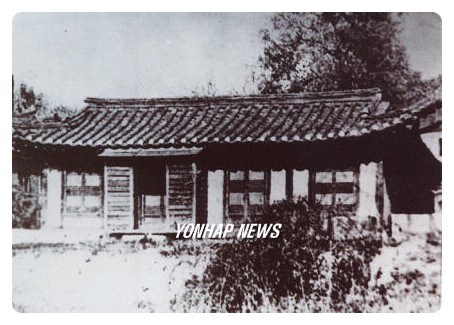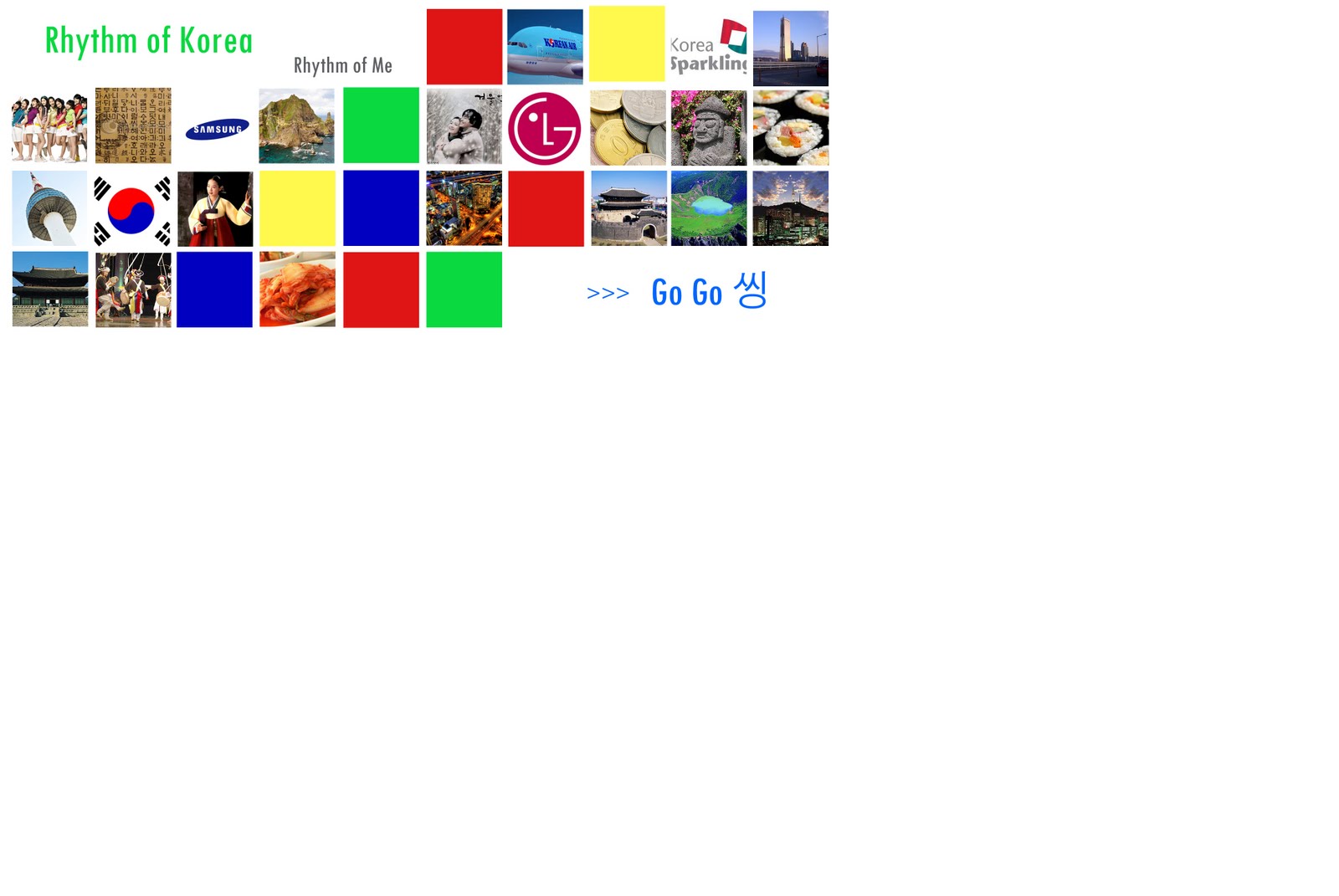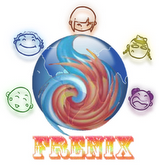Songdo International Business District (SIBD) is a planned international CBD planned to be built from scratch currently under construction on 1,500 acres (6 km²) of reclaimed land along Incheon's waterfront, 40 miles (65 km) west of Seoul, South Korea and connected to Incheon International Airport by a 7.4 mile (12.3 km) reinforced concrete highway bridge, called Incheon Bridge. Along with Yeongjong and Cheongna, it is part of the Incheon Free Economic Zone.
Q & A: Deborah Seccombe
South Korean girl group After School is not your typical K-pop band. The band has a rotating cast of singers who regularly “enrol” into the group and eventually “graduate” out of it.
Last Saturday night, the girls performed to a crowd of 40,000 people for the MTV Exit concert. The next day, they spoke to 7Days about their impressions of Cambodia.
This was your first time in Cambodia. How was it?
It’s funny, we were all so worried at first. When we went to the stadium it was so large and we thought, ‘Can we fill all of this?’ Then at the concert, it was fully packed and everyone was shouting ‘After School, After School’. We were amazed and so glad. We just felt such a true support from the fans and a love for the Cambodian youth.
How do you feel about Cambodia?
Unfortunately we didn’t get to go out and about much, we spent a lot of time driving around. When we were in the car people waved to us and they were always smiling.
We were very glad to come here and be a part of this campaign. We had a really great impression of Cambodia and the food too, it is beautiful.
Why do you think K-pop is so successful in Cambodia?
Our songs are very easy, they are easy to sing and dance to. People love to follow it because us Korean people have a lot passion. We are people with a passion. The audience can feel our passion and they feel happy when they are watching us.
How does After School stand out from the rest?
A difference between us and other K-pop bands is we have this theme that you come in and you graduate - it’s like a school. We also have three different styles. We have a red style, which is sexy, a blue style which is pure, and an orangey-caramel style which is fun and exciting.
Who decides on the dance routines? We hire a choreographer who is ready 24/7 to make new moves. In every performance we have a theme – once we did a dance to drums, another time we did tap dancing. We have a special theme that we show at each performance, but we didn’t get to do that at this concert. As for training, it usually takes us about six to eight months to practice the routines. A lot of work goes in to it, we spend a lot of time training.
Why is it important to use your position of influence for good?
We used to only focus on our work, but now we realise all our support comes from our fans. We want to do stuff that gives back to them. Celebrities are very influential, and youth these days quite often listen to TV, media and stars more than they listen to their parents or friends.
We think it’s important to use our voice for a good cause.
Do you plan to come back to Phnom Penh?
Of course. We would love to come. Especially if it’s for a good cause, we would love to come again, again and again.
K-Pop romances resonate with Cambodian readers
A wave of Korean cultural influence from fashion and beauty to the music industry is taking an ever-increasing hold of Cambodia’s young pop consumers.
Korean novels, translated from the original Korean language to Khmer language, have soared immensely in popularity amid this trendy culture wave.
Usually about 150 to 200 pages in length, these novels have catchy titles – almost always dabbling in the topic of love and romance. Some recent titles have included “Your handsomeness grabs my spirits” and “Fall in love with me, girl”.
These pop novels tend to depict young, budding love and play on the exciting and fast-paced romantic imagination of young adults.
Hom Rattana, a student at the University of Law and Economics, said that she’s been reading these romantic novels since her first year of high school.
“The novel has impacts on young people’s mindsets, because it encourages them to have a longing for a certain sweetness and affection from their partner. It makes me want the romantic partner I’m reading about,” she said.
“Khmer novels usually have a lesson at the centre of them, but we aren’t learning much from these Korean novels besides one depiction of love,” Hom Rattana added.
She said that because of this central theme of love and romance, and especially because of the fun and interesting writing style this creates, she prefers these K-pop romance novels to Khmer novels. She finds herself wanting to follow-up on the characters’ stories because they are the same age as Hom Rattana, and like herself, university students.
Heng Solida, another K-pop novel enthusiast, said that most readers are girls, as the novels put a strong focus on playing up to female sentiments.
“The novels use great language and funny phrases to keep me emotionally entertained,” she said.
It’s pretty clear that as young Cambodians, we probably don’t always have the disciplined habits of taking time out of our day to read. This brings us straight to the television. But, the rise of K-pop novels has been challenging the stereotype of youngsters in front of the TV screen as of late, as youth are choosing novels over their favourite programming.
Sok Chanphal, a writer and lyric composer, said that these novels keep readers interested with their fun language, and are missing any messages of importance.
“Some writers just write for the sake of writing. As the writer, we should include a message for the readers because it can help society,” he said.
Ly Chanda chooses not to read K-pop novels because he believes, too, that they lack a message.
“As young Cambodians, we should know what messages are good and what messages are bad. We have to understand that these novels are only for entertainment, and have little to do with real life.”
Vrek Danita, a university student, used to read K-pop novels but now finds them a waste of time.
“It brings teenagers into an imagined world. High school girls who like to read these kinds of books will want to try to have the same kind of lover, and then they’re set up for failure. On top of that, females are portrayed as inferior to their male counterparts.”
Incheon Taxi to provide interpretation service starting next year
Incheon Municipal Office announced that starting January 1st, 2012, all taxis operating in the city will have foreign language interpretation service available.
As needed, a cab driver or a foreign passenger may dial a free call center (080-840-9595) and select a language for which interpretation is required. Then the line will connect to an interpreter of that language and he/she will translate the conversation between the driver and passenger. The interpretation service is available for seven different languages: English, Japanese, Chinese, French, German, Russian, and Spanish. Service hours are from 7:00 to 22:00 on weekdays, and from 8:00 to 18:00 on Saturdays and holidays. This service is expected to reduce communication barriers between taxi drivers and foreign tourists, most of whom are hailing cabs at Incheon Airport.
2012 Busan Grand Sale

The 2012 Busan Grand Sale is slated to take place in tandem with the 2012 Korea Grand Sale.
From January 9, 2012 to February 29, 2012, approximately 2,400 businesses representing 82 different brands of shopping, dining, arts & culture and others in such major areas of Busan as Haeundae, Nampodong, Gwangalli, and Seomyeon will offer up to 70% discount on a large variety of items, and also distribute coupon books.
Meanwhile, the 2012 Korea Grand Sale will be participated by six major cities and provinces, including Seoul, Busan, Jeju, Gyeongsangbuk-do, Gangwon-do, and Jeollanam-do.
The Farewell Festival
Winners for Recommend Best Contents Event Released
Macbook Air | Mol*** Noun | |
Lotte Hotel voucher | Alfo*** Delgado | |
rady h*** | ||
Korea pass (100,000won) | Eat Your K***hi | |
Cha*** Alberg | ||
B***y Meverden |
| iTunes $15 gift card | |||||
| No. | Name | No. | Name | ||
| 1 | Fahimeh Me***nN | mehmann***1@***il.com | 16 | 陈 * | cx8***@live.** |
| 2 | Ierra M***e | ierrami***@y***o.com | 17 | 洋 * | angely***@h***ail.com |
| 3 | INTAN BAI***A JAILANI | xoxo_goss***urlz@***oo.com | 18 | peiyi ***g | peggy5***3@y***o.com.tw |
| 4 | Jennifer Dyac***ko | jcdyach***o@***il.com | 19 | shan s*** xu | angela_***@**6.com |
| 5 | Lee L*** Kit | kitz6***@***il.com | 20 | 六翼 * | wuding***g@**6.com |
| 6 | Ne*** Sir | nelie_angel_f***er@h***ail.com | 21 | ERI FUJI***A | fuji***i@h***ail.com |
| 7 | nehal h***ly | nehal_***@y***o.com | 22 | 松岡 規* | kyupy***1@y***o.co.jp |
| 8 | simon m*** | simon***@h***ail.com | 23 | KA***YOSHIOKA | ka***_74@d3.***n.ne.jp |
| 9 | Kerry McGli***ey | kerrymcgli***ey@***oo.com | 24 | 安藤 ** | saki.ando***6@***il.com |
| 10 | Alfiah ***ri | crimson***w.kai@***il.com | 25 | 木口 千** | momorin***o@***oo.co.jp |
| 11 | car*** liang | carri***@***.com | 26 | キン **ウ | nobu0219ki***ro@***oo.co.jp |
| 12 | 小羊 * | 46216***2@**.com | 27 | 辻 ** | minm***1@te***.ocn.ne.jp |
| 13 | 萌 * | mengdan***58569@***il.com | 28 | 待山 **子 | yu***-my@i.s***bank.jp |
| 14 | Tat Lam ***g | tatlam.w***@***il.com | 29 | 望 ** | jhs***@mits***soko.co.kr |
| 15 | 子濤 * | abc23651***@y***o.com.tw | 30 | 彩花 ** | aya_86ki***@y***o.co.jp |
Korean Traditional Culture Camp
1. Place : Chuncheon, Wonju, Youngwol, Gangneung
2. Time : 2011. 12. 26(Mon) ~ 12. 28(Wed)
3. Participants :International Students, Korean Students
... 4. Host : Korean Buddhist Chheonthae Order
5. Supported by : Ministry of Culture, Sports & Tourism, Global Cultural Exchange Forum
2. Program
12. 26(Mon.)
○ Chuncheon(Animation Center, Hwamok Garden, Soyang River), Cultural Experience in Temple
12. 27(Tue.)
○ Cultural Experience in Temple, Youngwol(Kim Satgat Culture Hall, Jangneung, Cheongryeongpo)
12. 28(Wed.)
○ Gangneung(Gyeongpodae Beach, Coffee Museum), Exploring to Temple
Application From and more information(http://www.kinsa.org/2201#0)
បុណ្យសពមេដឹកនាំ គីម ជុងអ៊ីល នឹងត្រូវធ្វើ ឡើងនៅថ្ងៃទី២៨ ខែធ្នូ
ព្យុងយ៉ាង៖ យោងតាមព័ត៌មាន រដ្ឋរបស់ប្រទេសកូរ៉េខាងជើង KCNA បានឲ្យដឹងនៅថ្ងៃទី១៩ ខែធ្នូ ឆ្នាំ ២០១១ នេះថា ពិធីបុណ្យសព របស់មេដឹកនាំ កូរ៉េខាងជើងលោក គីម ជុងអ៊ីល ដែល បានស្លាប់តាំងពីថ្ងៃសៅរ៍សប្តាហ៍មុននោះ នឹងត្រូវធ្វើឡើងនៅថ្ងៃទី២៨ ខែធ្នូ ខាងមុខនេះ។
គួរបញ្ជាក់តាមព័ត៌មានរដ្ឋរបស់កូរ៉េខាងជើង ដែលទើបនឹងបង្ហើបព័ត៌មាននៃការទទួលមរណៈ ភាពរបស់លោក គីម នៅថ្ងៃចន្ទ នេះ បានបញ្ជាក់ពីមូលហេតុនៃការស្លាប់របស់លោកថា លោក បានទទួលរងនូវជម្ងឺបេះដូង ស្របពេលដែលលោកចេញទៅបំពេញទស្សនកិច្ចក្រៅ រដ្ឋធានីព្យុងយ៉ាងតាមរថភ្លើងកាលពីថ្ងៃសៅរ៍ ទី១៧ ខែធ្នូ ឆ្នាំ២០១១។
special lecture for ASEAN-Korea Youth

8th floor, Taepyeongno 1ga, Jung-gu, Seoul
Line 1 and 2 City Hall station Exit 4 or 5
Line 5 Gwanghwamun station Exit 5
Date: December 2011~February 2012, Fridays (3 Sessions)
Time: 04:00p.m.~05:30p.m.
(The lectures will be conducted in English Language)
This special lecture is open to all university students, young professionals from ASEAN member countries and Korea. The aim of this program is to facilitate youth exchanges and promote understanding between the future leaders of ASEAN and Korea.
To register, please visit the ASEAN-Korea Centre’s website: www.aseankorea.org and fill out the online registration form or attached registration form (click here). Admission is limited to early registrants.
SCHEDULE
| DATE | TOPIC | LECTURER |
| 16 December 2011 | City Planning of Seoul based on Fengshui of Taoism | Kim Se Won, Professor, Korea University Graduate School of International Studies |
| 13 January 2012 | Locating Southeast Asian Food in South Korean Foodscapes | Kim Eje, Professor at Gyeonggin National University of Education, Cultural Geographer |
| 17 February 2012 | ASEAN-Korea Film Appreciation | (To be Announced) |
LECTURE OVERVIEW
This lecture presents the essential elements of Fengshui theory and its relationship to certain modern landscape ecological concepts and principles. It describes how this traditional paradigm of landscape planning has influenced the urban development of Seoul Metropolitan area.
2nd Lecture, “Locating Southeast Asian Food in South Korean Foodscapes
The lecture will explore the geographical location of Southeast Asian food consumption in South Korea and how the image of Southeast Asia is constructed through its various cuisines and restaurants.
5-day Start-up & Enterpreneurship Education Training
5-day Start-up & Enterpreneurship Education Training
< 제 1회 외국인 기술창업교육(외국인대상) >
When : Dec 19 ~ Dec 23 (Mon ~ Fri)
where : Kyungil University, Gyeongsan City, Gyeongbuk, Korea
* Introduction
The SMBA: Small and Medium Business Administration, sponsored by the Handong Global University and Kyungil University, is commencing the Start-up and Entrepreneurship Education for foreigners that are residing in South Korea.
The program is intended to help develop entrepreneurship mindset giving incentives and nourishing the capacity for sustainble development. Through the program, the people will be able to taste the entrepreneurial spirit, learn the basic skill-set necessary to start a new business as an entrepreneur, compete in the business competition learning how to compare their plans with others’ in the class, and have a chance to form a networking with students from other countries for possible multinational ventures in the future.
Hosted by : SMBA(Small and Medium Business Adminstration)
Organized by : KISED(Korea Institute of Start-up and Entrepreneurship Development),
Sponsored by : Handong Global University, Kyungil University
* Training Contents
• Establish Entrepreneurial Mindset
• Impact of Entrepreneurship & Creative Innovation
• Start-up Business & Effective Business Plan
• Entrepreneurial Finance
• Raising Capital
• Business Law and Business Ethics
• Marketing
• International Business
• Intellectual Property• E-Commerce
• Business Practicum - Simulation, Biz Communication, Writing Business Plan
* Application Information
1. Participant Eligibility
- Must have a strong desire to help developing countries or their respective communities with
entrepreneurship, whether it be to alleviate poverty, enhance economic growth, or
foster entrepreneurship-friendly policies.
- Working knowledge of English is essential to participate since all lectures and discussion are
delivered in English.
- Nationals from developing countries preferred.
2. Registration & training Fee
- Free registration and training Room and Board provided by Kyungil University
- Transportation fee should be borne by the individuals
3. Certificate of Completion
Each participant will receive an official certificate of completion
upon successful completion of the training program
4. How to Apply and Application Deadline
Please visit www.kised.or.kr or www.changupnet.go.kr and download "Start-up and Entrepreneurship Education" Application and submit completed application via email to greatestnak@kised.or.kr (Nak Gill Sung) by December 15, 2011.
5. Notification of Admission to the Program
First 55 qualified trainees will be selected and will be notified
by individually by December 16, 2011 via e-mail.
6. Contact Information
Contact "Start-up and Entrepreneurship Education" Cordinator Hyun Jae Lee
Phone: 054-260-1762 Fax: 054-260-1779
Email: geep@handong.edu
Get Calendar for Free ! :)

The first 3,000 foreign nationals residing in Korea to call the 1330 tt call center (Seoul), a multilingual travel hotline operated by the Korea Tourism Organization (KTO), between November 23rd and December 31st, 2011, and leave their name and address will receive the 2012 KTO table calendar for free. For more information on how to call the main 1330 tt call center in Seoul, please see the information below.
2012 Korea Tourism Organization Table Calendar Giveaway
☞ Event period: November 23-December 31, 2011
☞ Eligibility: Foreign nationals residing in Korea (3,000 people on a first-come, first-served basis)
☞ Instructions: Call the '1330 tt call center' and leave your name & address
* The 2012 KTO table calendars will be sent out on 4 different dates
(2011: December 12, 19, 26 / 2012: January 2)
Saemungil Road, Walk through History of Seoul
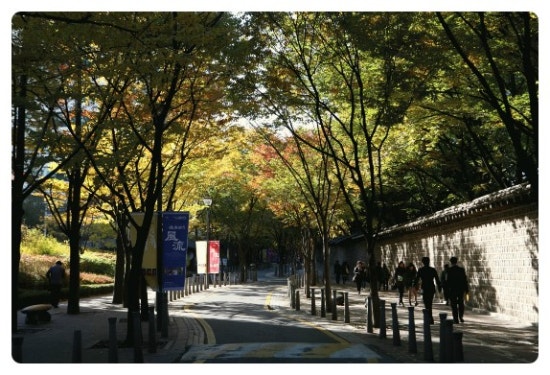
Saemun road starts at Seodaemun which is one of four big gates built during the King Teajo’s period. It was called Doneuimun at that time. However it was closed down due to Pungsu theory. Instead, Seojeonmun was built in the south of Gyeonghee palace. Seojeonmun was also dismantled when fortress was newly built and new gate was stood near Seodaemun. It was named Doneuimun.
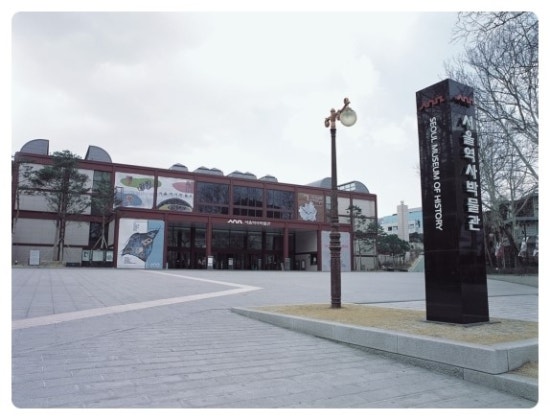
While Korea was under the Japanese rule, Japanese government destructed Seodaemun for “so-called” city planning. They called the inside of Seodaemun as Saemunbak and outside as Saemundong and Saemunan. These names were changed into Seodaemun after independence. Once again, a new name “Saemunan” was given in 2007. However, the road we are walking on is both inside and outside of Saemun road, so the road was named as Saemun rather than Saemun’an’, which means ‘inside’.
There are Chungdong road, Gyeonghui palace road and Naesusa road in both side of Saemun road. Saemun road is large and Chungdong road and Gyeongheui palace road are middle size. You may feel antique style of Saemun road which embraces ancient times and modern times of Seoul city.
When you get into the center of Saemun road, you will meet a tram which probably ran once upon a time in Seoul. There is Seoul History museum nearby. The museum displays history, culture and landscape from Joseon dynasty up to now. It has a variety of sources and remains of Seoul. The museum officials study, research, collect and preserve the things of Seoul. They provide many programs to help people understand Seoul even better.
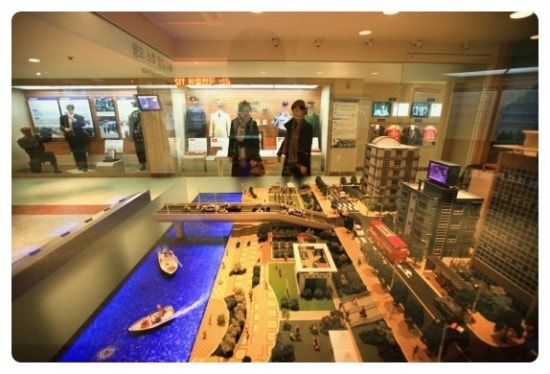
You will meet Agriculture museum which is firstly built and specialized agriculture museum in Korea. It has more than five thousand sources which were collected over two decades. Two thousand sources are on display. Nonghyup Central Association made the museum to preserve a great deal of agricultural heritage.
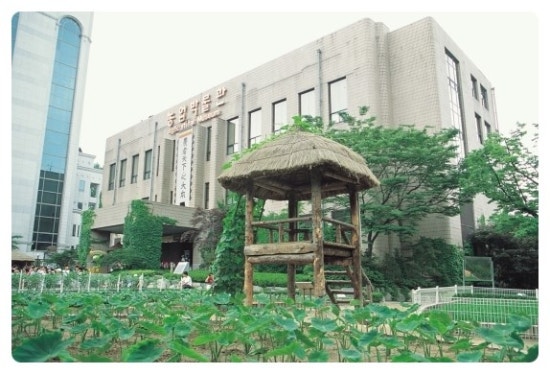
Let’s go to Apenzeller Memorial Museum. When you go up the hill from Jeongdong Jaeil church to the south, you will find a three-story red brick building, Baejae school. It is small but overwhelming indeed. Baejae school is the first modern education institution in Korea. Baejae was named by King Gojong. It is the only building that still remained, except Deoksu palace. As it is the first “modern” and “private” school, it has lots of sources on education history and modern history of the area. You can experience education history of Korea.
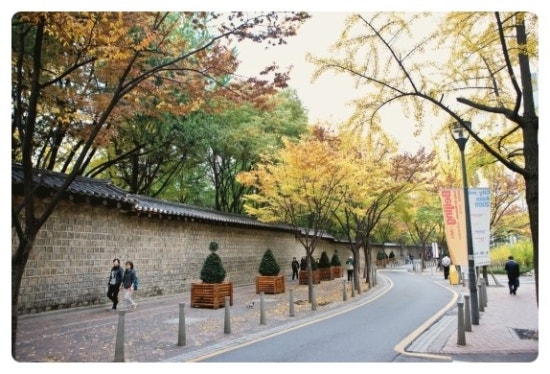
Let’s go to museum of history of monetary system, which is the first museum focused on history of monetary system and opened by Joheung Bank (Present Shinhan Bank) in 1997. You can look through 100 year old history of monetary system. It was year 1997 when commercial bank opened for the first time in Korea. The museum has remains and sources related to monetary system, currency and history of Shinhan Bank. The hall of history of monetary system consists of several sectors helping you look through wave of monetary system such as traditional age, modern age, age of Japanese occupancy and age after liberation. You can see a model of bank of those days.
